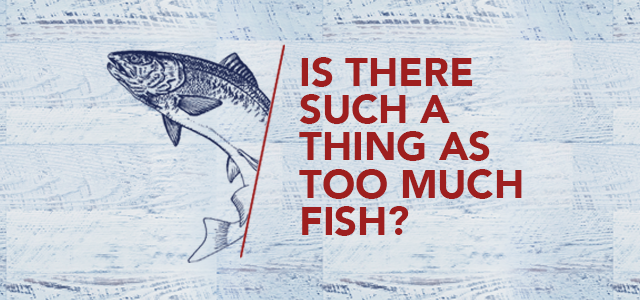
Fish.
Buttery, lemony, pan-fried to perfection with a dill cream sauce over a nice rice pilaf … is your mouth watering yet?
Or maybe you’re the breaded and fried and stick it on a sandwich type.
Maybe you consider eating fish a rare treat, since it’s hard to cook just right, you don’t know what kind to buy, or you’re afraid of the mercury content.
We hope after reading this, you’ll be a little more inclined to experiment with seafood. As they say, knowledge is power, and if it’s the power to eat more yummy seafood, we say that’s fin-tastic!
Health Benefits of Fish
According to the Harvard School of Public Health, fish and seafood provide omega-3 fats, Vitamin D, selenium, and protein, among other nutrients.
Now, don’t gloss over that list!
Omega-3 fats are beneficial for heart health (and can even reduce your risk of dying from heart disease). They’re also vital for proper brain development, which is why it’s important for pregnant and breastfeeding women to get enough.
Vitamin D, a nutrient most Americans are deficient in, is necessary for hundreds of metabolic processes in the body.
Selenium keeps our brains, immune systems, and reproductive organs functioning as they should.
And those are just a few nutrients mentioned. Oh, one more – eat canned fish packed with their bones, and you’re getting a solid dose of calcium!
Understanding Mercury
To be sure, mercury is a toxic substance. Mercury is an element that occurs naturally on the earth. It can also be a by-product of certain industrial processes.
High enough doses of mercury (whether you ingest it or breathe it in, or touch it) can pose a serious risk to the body, and can harm the nervous, digestive and immune systems. But most people do not consume fish in such large quantities to pose a risk.
In fact, the EPA, FDA, and IOM (Institutes of Medicine) all conclude that there is not enough evidence to convince them to tell people to limit their fish intake. Rather, be smart about the types of fish you consume.
A good rule of thumb: if it’s lower on the food chain (a smaller fish), then it will have less mercury than a fish higher up on the food chain. Larger fish eat smaller fish and accumulate mercury from doing so. Keep a handy-dandy chart of fish to eat and fish to avoid on hand when purchasing or consuming seafood.
So How Much Can I Eat?
It is recommended that you consume 2-3 portions of fish every week, and eat a variety of types of fish. Be a smart consumer, but don’t be afraid of fish. With all the different, you’re bound to find something you like!
